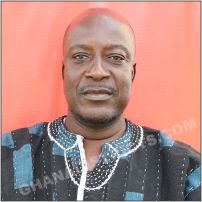

Manufacturing/Secondary Sector
The Secondary Sector is associated with enter prices in using less every and inputs in products, they fall into the categories of the high industries, and indigenous craft enterprises.
The light industries operating in the district comprise of Trades men and artisanal handy men in the areas of metal fabrication, auto mechanic works ,Technical works, painting, plumbing and the like which are springing up at all corners of the district. It is recognised as an avenue to absorb, the unemployed youth.
Hence efforts are put to strongly as an instrument for private sector development, job creation and a revenue source for the Assembly.
The indigenous craft industry like the hand craft works which is well instituted and constituted in the district has the capacity to serve the district as a source of employment, revenue and as a tourism industry when effectively promoted and organised. This sector needs assistance to improve production and technologies
Services/Tertiary Sector
The private services in the district can be captured as formal and informal. The informal Sector include, trading which comprise of retail activities in the markets and homes, the others are road transportation services, which is run by private owners and individuals under the GPRTU, the sale of petroleum product by filling stations and other individuals selling petroleum products in small quantities.
Telecommunication services in the form of communication centres are located in few communities and are owned by private individuals. There are also few tourist sites which are mostly manned by private individuals either because they poses the allodal title to those sites or by virtue of the fact that they come from those communities. These sites exist as customary edifits, religious craft, cultural festivals, aesthetic scenery or geological impression of the hills and rocks.
The hospitality industry which includes; entertainment centres drinking and chops bars is controlled by the private individuals. There are also hair dressers, dressmakers and tailors providing services to the people in the district.
The following services are also provided under the formal sub-sector of the tertiary sector: Transportation, which include the running of the metro-mass transport, Telecommunication, which includes pay phones in some communities, the services of “One Touch”, “Buzz GSM’ and Space on mobile phone services providers and land phones provided for institution.
Some communities are also serviced with electricity from the national grid (VRA); though not all communities are benefiting.
The tourism sector is also somehow co-ordinated by government institutions especially Tourism Development Board, but this impact and influence is minimal.
Transportation as part of this sector, includes the running of the metro-mass transport and the construction and maintenance of feeder and tard roads
Forest Resources And Products:
The district has three gazetted forest reserves covering a total area of 455.21km. Apart from these there are relics of community fallow forestlands that epitomize the gazetted reserve in Datoku-Bingu which are not under severe threat by agricultural activities.
There are forest plantations either planted by communities, groups and individuals with support from the Forestry Commission or Environmental NGOs. The total area of plantation is estimated to be 578.72 hectares. The species planted include teak, Ginelina, Anogeissus, mahogany mitraggaa, Dalbergia and Neem.
In the off reserve areas trees are established mostly in the form of wood lots. The degraded forest and marginal lands require massive plantation of wood lots to restore them. The degraded marginal lands include degraded mountainous areas and the surface mining areas in the Datuku, Pelungu and Nangodi areas.
Extend Of Wood Production:
With a predominantly rural population, the livelihood of the people is heavily depended on forest resources. The population depends on small timber poles and rafters from the forest to build their homes. Wood from the fores is also used as the traditional energy sources. Almost the entire populations depend on both firewood and charcoal for domestic and commercial use.
With the increase in the cost of liquidified petroleum Gas (LPG) and electricity tariffs, the biomass fuel industry has boomed and the export of firewood and charcoal to urban towns has become a lucrative economic activity and a common phenomena. The pressure on tree species has therefore increased beyond the local demand, and if care is not taken, the district will soon become a net importer of wood products.
The almost annual ritual of bush fires which often occur late in the dry season, weaken the roots of perennial grasses and also kill off young regeneration of woody
vegetation. The stems and branches of old trees get scorched resulting in their stunted growth and bad shapes, the seeds of plants also get lost.
This situation has therefore left the district very degraded. Mostly, other trees of sheanuts, acacia and dawadawa are found scattered on farmlands and range lands with no undergrowth.
Encroachment / Degradation:
Intensive and extensive farming, using bullock ploughs and burning over a prolonged period is responsible for degraded condition of large areas both in the reserve and outside reserve areas.
The remaining woody vegetation in the forest reserve is also subjected to pilfering for poles and fuel wood. Outside the reserves there had been indiscriminate harvesting of trees for fuel wood without replacement leading to most areas very degraded.
Mining And Quarrying:
Another source of threat the Environment is surface mining. There is an old underground shaft mine in Nangodi, where mining took place between 1934 to 1939 by the Germans, but was closed since World War II.
Artisan mining however, began in Nangodi area in 1995, and spread widely to the Pelungu and Datuko areas. An area of about 72sq km has been demarcated as concession in the Eastern part of the district, which range from one (1) to 25 acres and can be acquired by groups, individuals or companies.
The type of mining taking place is crude, and is a combination of surface and underground hard rock mining which involve the use of simple equipment e.g. Shovels, ropes, pick-axes, buckets, water pumps, compresses and drilling machines.
Surface mining activity is the honeycomb hoeing and pit digging type of mining. The processing into gold is either through mechanical process or manual and is done at all parts of the district.
The effects of these activities are visible as:
Deforestation
Silting of water bodies
Deep trenches and pits which are threats to human and animal life.
Massive soil erosion
Soil infertility
The Assembly needs to pursue and encourage Communities, Individuals, NGOs and institutions to embark on massive afforestation on:
Degraded areas in forest reserves
Areas degraded by small scale mining
Land areas affected by earthworks during construction
Catchment areas of all dams and dug-outs in the district
Avenue and amenity planting in towns and villages
Marginal lands which cannot support Agriculture
The slopes of Hills in Tongo and Nangodi
Banks of rivers and stream.
Problems Of Physical Development:
The area is not schemed, so development is carried out haphazardly. Physical development including buildings has already sprung up in most areas noticed to be future point of attraction. The proliferation of temporal developments is a matter of concern as no planning intervention or layout is available to guide any such developments.
The staffing problem of the physical planning department prevented the detailing and scheming of the areas under the then Bolgatanga District and the situation is not going rapidly improve since the constraints still exist. Generally, housing condition are poor. Most of the buildings are mud, or swish without foundations, cracked walls, dilapidated or shored or not maintained and roofed with thatched.
Date Created : 11/23/2017 4:23:54 AM












 facebook
facebook
 twitter
twitter
 Youtube
Youtube
 +233 593 831 280
+233 593 831 280 0800 430 430
0800 430 430 GPS: GE-231-4383
GPS: GE-231-4383 info@ghanadistricts.com
info@ghanadistricts.com Box GP1044, Accra, Ghana
Box GP1044, Accra, Ghana